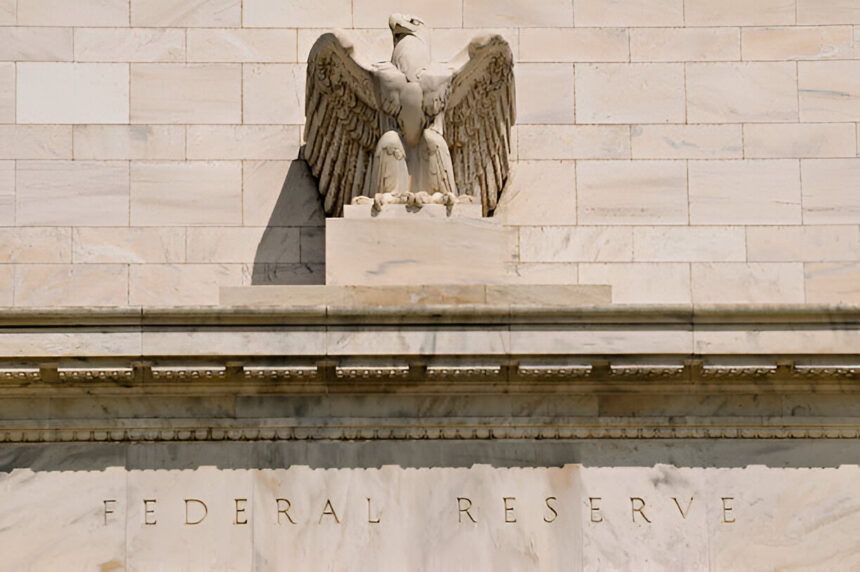Financial markets often conceal a nervous anticipation, a collective hush before crucial events. Among these, the Federal Open Market Committee (FOMC press conference) stands as a particularly potent catalyst, capable of sending ripples or even seismic waves through portfolios worldwide. Today’s presser, in particular, carries an amplified significance, echoing historical precedents and recent warnings from the Federal Reserve.
Why Does the FOMC Press Conference Matter So Much?
The FOMC press conference, particularly the Q&A session with the Fed Chair, offers important details about the central bank’s economic outlook, future policy intentions, and interpretation of current data. This communication has the potential to cause significant market volatility, as it frequently clarifies or subtly shifts market expectations about interest rates, quantitative easing, and other monetary policy tools, thereby influencing asset prices worldwide.
For decades, market participants have hung on every word uttered by the Federal Reserve Chair. While the formal statement released prior to the press conference outlines the immediate policy decision, it’s during the live Q&A that the true nuances of the Fed’s thinking are revealed. This interactive session allows journalists to probe deeper, often extracting subtle cues about the path of interest rates, the central bank’s tolerance for inflation, or its concerns about specific economic headwinds. It’s here that the market’s “read” of the Fed often coalesces, leading to rapid repricing of assets. The direct exchange provides a human element to policy that the written statement cannot convey, allowing market participants to gauge conviction, concerns, and potential shifts in strategy.
How Do Unexpected Rate Changes Impact Markets Intraday?
Unexpected changes in the Federal Funds Rate, or even deviations from market consensus regarding future rate paths, can cause significant intraday market movements. A 2023 Federal Reserve study (FRB: FEDS Notes) highlights this, noting that such surprises can lead to intraday market swings of up to 1.5%, as algorithms and human traders alike rapidly adjust positions to new economic realities and implied borrowing costs.
Consider the complex network that makes up global finance: every asset, from equities and bonds to commodities and currencies, is priced with an implicit understanding of the prevailing interest rate environment. When that understanding is suddenly challenged by an unexpected Fed move, the ripple effect is instantaneous and profound. A surprise hike, for instance, immediately makes borrowing pricier, potentially dampening corporate profits and consumer spending, leading to a sell-off in risk assets. Conversely, an unexpected cut can inject liquidity and stimulate growth, often fueling rallies. The speed of these reactions, often within minutes, underscores the high-frequency trading landscape and the importance of quick, informed decision-making.
During an intermeeting rate cut in the late 90s, the suddenness of the announcement surprised almost everyone. The bond market experienced such extreme volatility in the immediate aftermath that some traders initially questioned the veracity of the news. It was a reminder that while economic models predict, real-time market reactions to truly unexpected events can be far more spontaneous and swift than any projection.
The Shadow of Tariffs: A New Dimension of Fed Concerns
Beyond traditional monetary policy, the Fed’s purview extends to broader economic stability. Fed Chair Powell’s recent warnings about the potential impact of tariffs, particularly those slated for 2025, serve as a crucial example of how non-monetary policy concerns can still drive FOMC communication and, consequently, market reactions. These warnings highlight a difficult relationship between trade policy, inflation, and economic growth, adding layers of complexity to the Fed’s assessment.
Fed Chair Powell’s recent warnings about the economic consequences of tariffs introduce a nontraditional source of volatility, specifically the potential to spur inflation while simultaneously slowing growth concerns indicate the Fed’s expanded focus beyond just interest rates, signaling that adverse fiscal policies can complicate the central bank’s dual mandate and lead to market uncertainty.
What is the Fed’s Dual Mandate, and Why Are Tariffs a Challenge?
Historically, the Fed’s primary focus has been firmly on inflation and employment, typically addressed through interest rate adjustments and balance sheet management. However, in an increasingly interconnected global economy, external factors like trade disputes and tariff implementations can significantly complicate the central bank’s ability to achieve its dual mandate. Higher tariffs, for instance, can act as a tax on consumers and businesses, raising input costs and ultimately consumer prices (inflation) while simultaneously dampening demand and stifling economic activity (slower growth). For a central bank tasked with price stability and maximum employment, such a situation presents a “stagflationary” dilemma, a scenario where traditional tools may be less effective or even counterproductive. The market, in turn, attempts to price in the Fed’s potential response to such a multifaceted challenge, often leading to heightened volatility as investors grapple with conflicting economic signals.
I witnessed how geopolitical tensions Back in the early 2000s, geopolitical tensions, although not directly related to monetary policy, often seeped into Fed commentary and influenced their dovish or hawkish leanings. The subtlety of how the Fed acknowledged external pressures without explicitly commenting on policy outside their mandate was always fascinating. It taught me that it’s not just what they say, but how they frame the broader economic landscape, including external shocks like trade policy.
Decoding the Fed’s Language: More Than Just Numbers
For seasoned market participants, the FOMC press conference is less about “if” there will be volatility and more about “where” and “how much.” It’s an exercise in forensic linguistics and subtle prognostication. The market isn’t just reacting to rate changes; it’s reacting to every inflection, every carefully chosen word, and every hesitation. The true insights often lie in the unstated, the emphasis, or the shifts in typical phrasing.
Forward Guidance:
The Fed’s articulation of its future policy intentions is paramount. Is the language still “data-dependent”? Does it hint at a faster or slower pace of tightening/easing? Even a slight shift in phrasing, like moving from “ongoing increases” to “some further increases,” can move billions of dollars as market participants adjust their projections.
Economic Projections (Dot Plot):
The actual “dot plot” (individual FOMC members’ projections for the federal funds rate) provides crucial context for Powell’s remarks and is released concurrently with the statement at certain meetings. Any significant divergence from previous projections, or surprising consensus, will be heavily scrutinized and often dictates the initial market reaction.
Risk Assessment:
How does the Fed assess risks to its dual mandate? Is it more concerned about inflation being sticky or about a potential recession? The balance of these concerns informs their policy bias and can significantly influence market sentiment. A nuanced answer on inflation, for instance, can signal greater flexibility, while a hardline stance can imply prolonged restrictive policy.
The true art of navigating FOMC press conferences lies in anticipating how these elements will coalesce and impact various asset classes. A dovish tilt might send equities higher and the dollar lower, while a hawkish tone could have the opposite effect, boosting bond yields and strengthening the currency. Experienced traders understand that the initial reaction is often a “knee-jerk,” and the real directional move can unfold as market participants digest the full implications.
Preparing for Today: Actionable Insights for Traders
Given the immediate potential for significant FOMC press conference volatility today, how should traders and investors position themselves?
Understand the Consensus (and Deviations):
Know precisely what the market is currently pricing in for interest rate changes and future policy. Any divergence from this consensus will be the primary driver of volatility. Tools like the CME FedWatch Tool provide real-time probabilities for rate changes.
Focus on the Nuance:
Don’t just listen for headline rate decisions. Pay close attention to Chairman Powell’s tone, the answers to follow-up questions, and any new phrases or omissions from the prepared statement. These often reveal more about the Fed’s underlying bias and long-term strategy.
Risk Management is Paramount:
Employ strict risk management protocols. Use stop-losses, manage position sizes, and consider reducing exposure to highly volatile assets before the presser. Volatility can present both opportunities and rapid amplification of potential losses.
Option Strategies:
For experienced traders, options can offer ways to profit from volatility (e.g., straddles, strangles) or hedge existing positions without taking direct directional risk. However, these strategies require a profound understanding of options mechanics, implied volatility, and risk profiles.
Patience and Prudence:
Sometimes, the best trade is nothing. If the market reacts too erratically or unclearly, waiting for the dust to settle and for clearer trends to emerge is often the wisest course of action. The true market direction often becomes clearer in the hours or days following the immediate knee-jerk reactions, allowing for more calculated entries.
Attempting to outsmart the Fed is a futile endeavor. The most impactful moves often come from the unexpected, and liquidity can dry up quickly around these events, leading to unpredictable slippage. With my practical experience, I can say most successful decisions during FOMC announcements have consistently involved thorough preparation and, most importantly, maintaining the discipline to adhere to my pre-established risk parameters, even during high-stress situations. Occasionally, that means missing a quick move, but it almost always protects against catastrophic ones.
Conclusion: The Enduring Power of the Central Bank’s Voice
Today’s FOMC press conference is more than just a scheduled event; it’s a testament to the enduring, profound power of central bank communication in shaping global financial markets. The Fed’s every utterance holds sway over capital flows and asset valuations, influencing everything from the historical impact of tariff warnings and broader economic concerns to the proven intraday volatility caused by unexpected rate shifts. For traders and investors, approaching this event with a blend of informed anticipation, strategic flexibility, and disciplined risk management is not merely advisable, it’s essential for long-term survival and prosperity in the dynamic world of financial markets. The lessons from decades past reinforce that while fundamentals guide, the Fed’s narrative often dictates the immediate path.
What are your strategies for navigating today’s FOMC press conference? Share your insights and how you prepare for such high-impact events.









